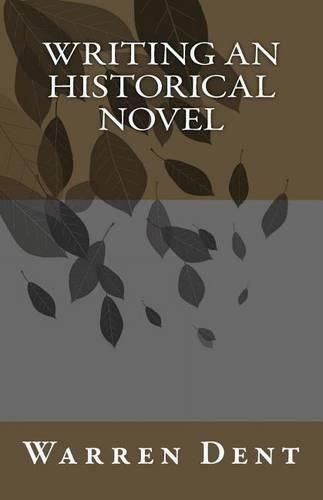Readings Newsletter
Become a Readings Member to make your shopping experience even easier.
Sign in or sign up for free!
You’re not far away from qualifying for FREE standard shipping within Australia
You’ve qualified for FREE standard shipping within Australia
The cart is loading…






Writing an Historical Novel sounds like it could be fun and not too difficult. If you are writing about Grandma as a youth and the games she played and the food the family ate, where they all went on vacation, and how they decorated their house you might be right. But if you want to wander further afield and write about the Egyptians and a new mystery you think would have applied in the times they built the pyramids, your job becomes a little more difficult. To be ‘acceptable’ an historical novel must convey a real sense of authenticity. You cannot use elephants to carry giant loads of they weren’t found in the country. There some authors who seek to raise challenging questions in their historical novels. Does their story sound plausible or not? Others want to educate - to weave historical events into the tale. What do you want to do as a writer? This booklet aims to help people identify their goals with respect to writing an historical novel and then to ensure they think carefully about the situation and circumstances surrounding their story. I doesn’t matter what the motivation was to start writing, it only matters what content you present and how it’s presented. Maybe your interest was triggered by something you saw on a television documentary?. Or a book you read with a story set in the middle ages? Or perhaps it was that old postcard which Aunt Prudence had sent from Kenya when she was a missionary there and which you just re-discovered.? But when you finally sit down at the keyboard, words don’t flow. Can I write a story? Can I tell history as I see it? Can I maybe do both? How can I get started? Where can I get help? That help is right here. The aim of this primer is to help you try to answer those questions for yourself, and give you some inspiration to have a go! There’s really only twenty five easy to read pages with lots of practical advice. It’s all presented in a whimsical, easy-to-read-and-enjoy way that might just appeal. There are useful suggestions about plot, organization, timing, and content presentation. As well there are references about how to write and how to publish, as well as some personal writing anecdotes, and a few fun little historical facts that may spur you on. Even the most famous authors had to start somewhere. Several are quoted inside. If the rest of the booklet doesn’t do anything for you, at least their words might.
$9.00 standard shipping within Australia
FREE standard shipping within Australia for orders over $100.00
Express & International shipping calculated at checkout
Writing an Historical Novel sounds like it could be fun and not too difficult. If you are writing about Grandma as a youth and the games she played and the food the family ate, where they all went on vacation, and how they decorated their house you might be right. But if you want to wander further afield and write about the Egyptians and a new mystery you think would have applied in the times they built the pyramids, your job becomes a little more difficult. To be ‘acceptable’ an historical novel must convey a real sense of authenticity. You cannot use elephants to carry giant loads of they weren’t found in the country. There some authors who seek to raise challenging questions in their historical novels. Does their story sound plausible or not? Others want to educate - to weave historical events into the tale. What do you want to do as a writer? This booklet aims to help people identify their goals with respect to writing an historical novel and then to ensure they think carefully about the situation and circumstances surrounding their story. I doesn’t matter what the motivation was to start writing, it only matters what content you present and how it’s presented. Maybe your interest was triggered by something you saw on a television documentary?. Or a book you read with a story set in the middle ages? Or perhaps it was that old postcard which Aunt Prudence had sent from Kenya when she was a missionary there and which you just re-discovered.? But when you finally sit down at the keyboard, words don’t flow. Can I write a story? Can I tell history as I see it? Can I maybe do both? How can I get started? Where can I get help? That help is right here. The aim of this primer is to help you try to answer those questions for yourself, and give you some inspiration to have a go! There’s really only twenty five easy to read pages with lots of practical advice. It’s all presented in a whimsical, easy-to-read-and-enjoy way that might just appeal. There are useful suggestions about plot, organization, timing, and content presentation. As well there are references about how to write and how to publish, as well as some personal writing anecdotes, and a few fun little historical facts that may spur you on. Even the most famous authors had to start somewhere. Several are quoted inside. If the rest of the booklet doesn’t do anything for you, at least their words might.